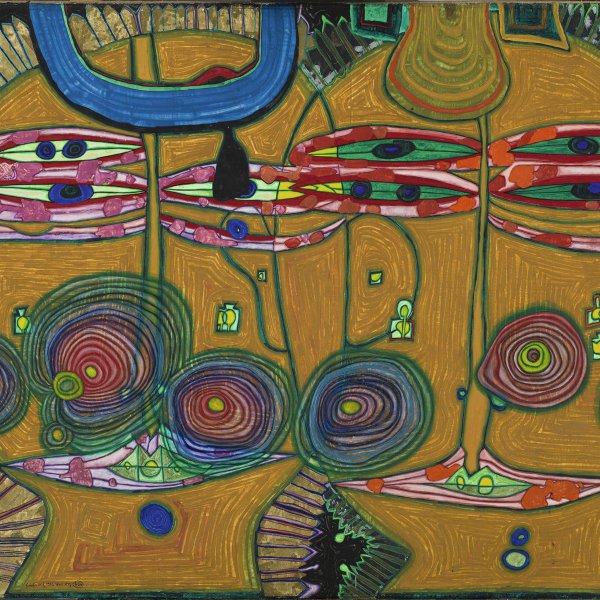Friedensreich Hundertwasser
Fatherless from an early age, the Austrian artist Hundertwasser was brought up by his mother, who was of Jewish origin, in dire poverty and in the claustrophobic climate of Nazi domination. In 1948, after the Second World War ended, he began to attend painting classes at the Akademie der Bildenden Künste, though he dropped out of school after a few months as he found the course boring and lacking in substance. That year he visited the exhibitions of Egon Schiele at the Albertina and Walter Kampmann, which greatly influenced him. He moved to Paris in 1950 with the intention of furthering his studies, only to abandon them. Thenceforward he began to make various trips that took him all over the world. His first solo exhibition was held at the Kunstverein in Vienna in 1952, followed by another at the Studio Paul Facchetti in Paris two years later. Since then his work was frequently shown.
Hundertwasser’s oeuvre, which appears to bear the imprint of the Viennese decorative art connected with the Jugendstil and Central European Expressionism, gradually turned towards an abstraction which, however, always retained some figurative elements. His works, with luminous colours, are notable for the use of the spiral and other features that infused them with symbolic meanings linked to his desire to seek the regeneration of the human being.
Hundertwasser also produced graphic works and developed an interest in town planning and architecture, which he wished to transform into something organic and ornamented vis-à-vis the prevailing functionalism. Many of his projects were executed, such as the Hundertwasserhaus in Vienna.





